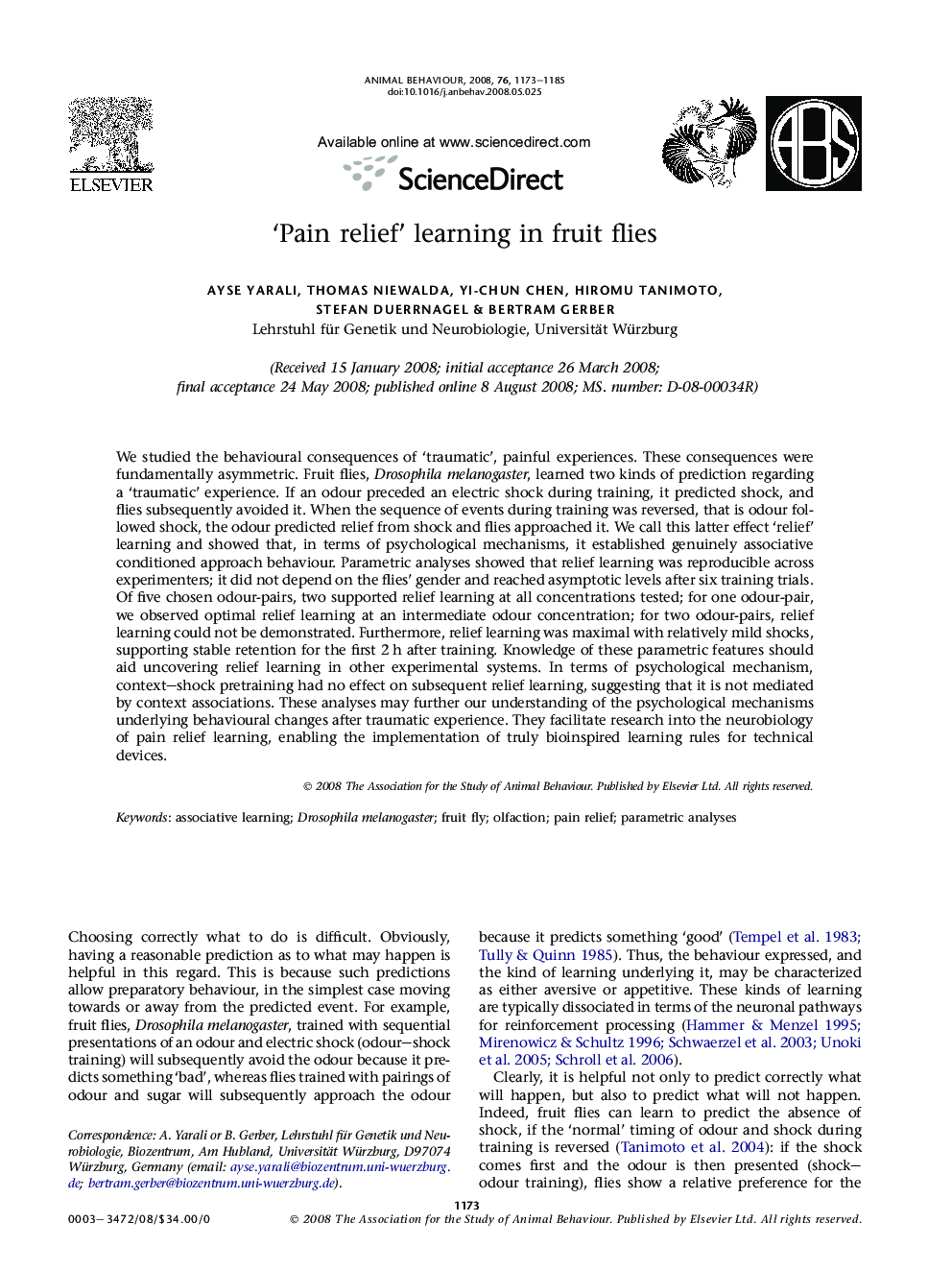| Article ID | Journal | Published Year | Pages | File Type |
|---|---|---|---|---|
| 2418756 | Animal Behaviour | 2008 | 13 Pages |
We studied the behavioural consequences of ‘traumatic’, painful experiences. These consequences were fundamentally asymmetric. Fruit flies, Drosophila melanogaster, learned two kinds of prediction regarding a ‘traumatic’ experience. If an odour preceded an electric shock during training, it predicted shock, and flies subsequently avoided it. When the sequence of events during training was reversed, that is odour followed shock, the odour predicted relief from shock and flies approached it. We call this latter effect ‘relief’ learning and showed that, in terms of psychological mechanisms, it established genuinely associative conditioned approach behaviour. Parametric analyses showed that relief learning was reproducible across experimenters; it did not depend on the flies' gender and reached asymptotic levels after six training trials. Of five chosen odour-pairs, two supported relief learning at all concentrations tested; for one odour-pair, we observed optimal relief learning at an intermediate odour concentration; for two odour-pairs, relief learning could not be demonstrated. Furthermore, relief learning was maximal with relatively mild shocks, supporting stable retention for the first 2 h after training. Knowledge of these parametric features should aid uncovering relief learning in other experimental systems. In terms of psychological mechanism, context–shock pretraining had no effect on subsequent relief learning, suggesting that it is not mediated by context associations. These analyses may further our understanding of the psychological mechanisms underlying behavioural changes after traumatic experience. They facilitate research into the neurobiology of pain relief learning, enabling the implementation of truly bioinspired learning rules for technical devices.
